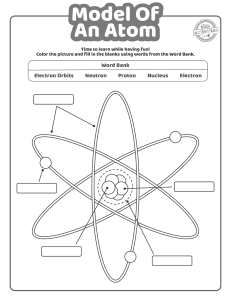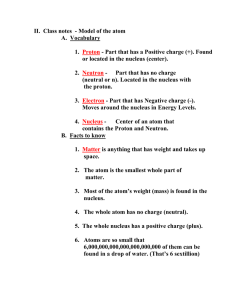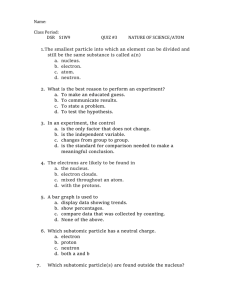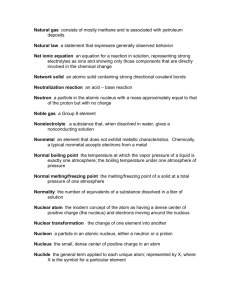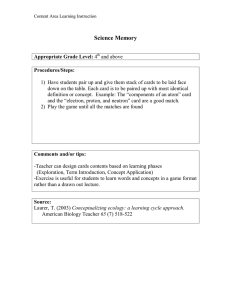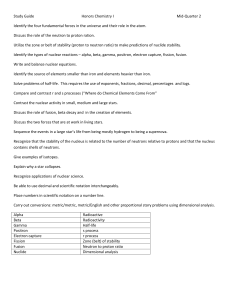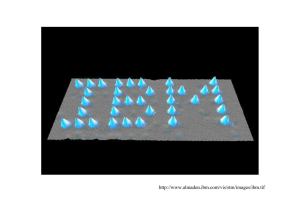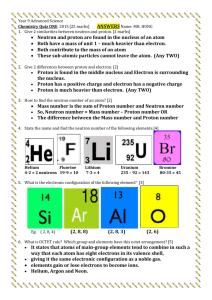Chem 2 Day 50 Nuclear Reaction Types
advertisement
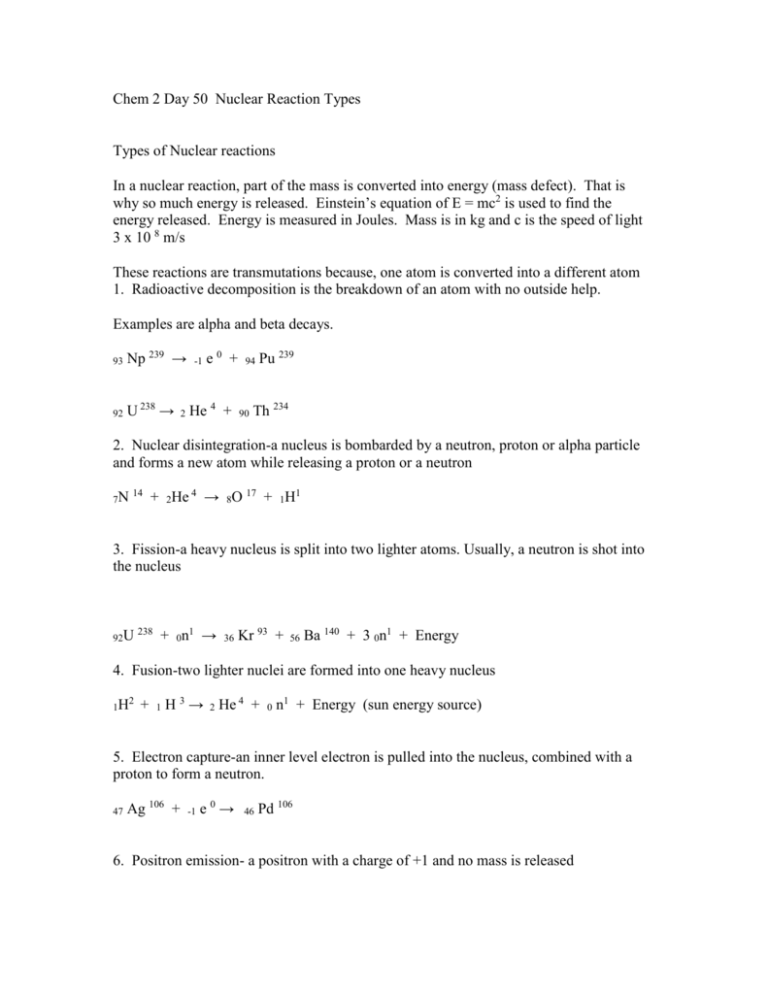
Chem 2 Day 50 Nuclear Reaction Types Types of Nuclear reactions In a nuclear reaction, part of the mass is converted into energy (mass defect). That is why so much energy is released. Einstein’s equation of E = mc2 is used to find the energy released. Energy is measured in Joules. Mass is in kg and c is the speed of light 3 x 10 8 m/s These reactions are transmutations because, one atom is converted into a different atom 1. Radioactive decomposition is the breakdown of an atom with no outside help. Examples are alpha and beta decays. 93 Np 239 → 92 U 238 → 2 -1 e0 + He 4 + 94 90 Pu 239 Th 234 2. Nuclear disintegration-a nucleus is bombarded by a neutron, proton or alpha particle and forms a new atom while releasing a proton or a neutron 7N 14 + 2He 4 → 8O 17 + 1H1 3. Fission-a heavy nucleus is split into two lighter atoms. Usually, a neutron is shot into the nucleus 92U 238 + 0n1 → 36 Kr 93 + 56 Ba 140 + 3 0n1 + Energy 4. Fusion-two lighter nuclei are formed into one heavy nucleus 2 1H + 1 H3→ 2 He 4 + 0 n1 + Energy (sun energy source) 5. Electron capture-an inner level electron is pulled into the nucleus, combined with a proton to form a neutron. 47 Ag 106 + -1 e0→ 46 Pd 106 6. Positron emission- a positron with a charge of +1 and no mass is released 1 p1 → + 19 K 38 → +1 18 β0 (+1 e 0) Ar 38 + +1 e0 Fission and fusion oil drop lab 7. No reaction but Gamma ray emissions can occur along with any other change of the nuclear nature. It is an excited electron releasing energy as it changes positions on the atoms shell. Internet work on Chernobyl, Three Mile Island and Bikini Atolls.

